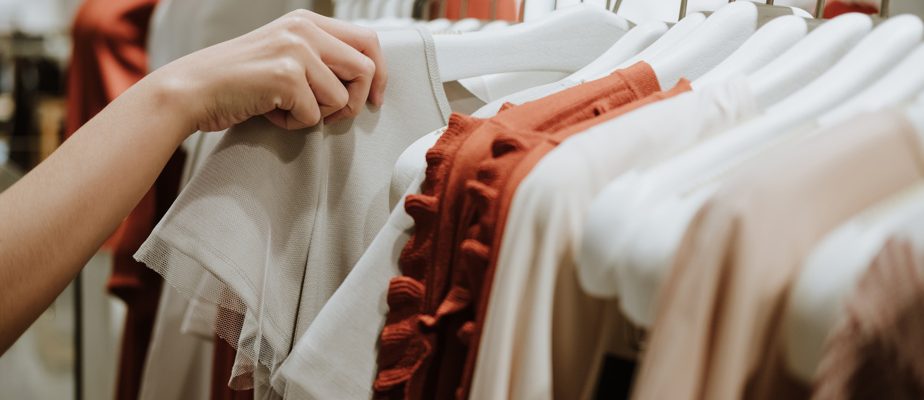While it is estimated that Montrealers throw away or donate more than 7 kg of clothing and other textile products per year, Renaissance continues its efforts to divert as much as possible from landfill by launching a guide on responsible consumption.
Could you live with a wardrobe limited to 40 items per season? This is the challenge that the organization is launching to Quebecers with the publication of its A short guide to responsible consumption.
Complete with advice on creating a capsule wardrobe, maintaining clothes, their durability and their revaluation, the guide, offered online, is part of the pilot project launched in 2021 by Renaissance and Vestechpro, center research and innovation in clothing. While continuing to focus on the other aspects of the project, namely reuse and recycling, the organization wants to raise awareness among the population about reduction at source.
“We want to make people think about how we can change our habits,” says the general director of Renaissance, Éric St-Arnaud. Can we consume better, particularly by turning to used goods? Can we also not buy as much and try to create kits to ensure that we use the clothes as much as possible? Then, if we are able, buy better quality clothes so that they can be reused. »

PHOTO ROBERT SKINNER, LA PRESSE ARCHIVES
Éric St-Arnaud, general director of Renaissance
According to research carried out by Vestechpro in 2022, Montrealers buy on average 9.7 kg of textiles per year, while they throw away or donate 7.4 kg. Note that textiles include not only clothing, but also bedding and household linen. Supported by professors Emmanuel B. Raufflet and Jonathan Deschênes and students from HEC Montréal, the circular economy researcher at Vestechpro, Ennouri Triki, arrived at these results by compiling the responses of 1,100 respondents to an online survey conducted between January and May 2022. Based on each of the categories named by respondents (coats, tops, pants, etc.), the weight of their textile consumption was estimated. The complete results of this study will be the subject of a scientific article, currently in preparation.
In 2019, 292,000 tonnes of textiles were thrown away, according to Recyc-Québec. “It’s appalling, the amount that is thrown away. How can we, firstly, educate people to donate their clothes and, secondly, to buy used? », asks Mr. St-Arnaud.
But does Renaissance have the capacity to accept more donations? His general manager believes him. “There is a need. Customers are there, no matter where we open. The user was associated with certain classes of society, with low income, but we see an increase [de l’attrait pour les articles d’occasion] in all strata of society. Also, in recent years, we have noticed that people are becoming more and more aware of the environment. »
In full expansion, the organization extends its activities outside the metropolitan region. After Sherbrooke and Gatineau, a first big box store will open its doors in the Quebec region over the next year.
Repair and recycle
At Renaissance, more than half of the merchandise received is put on the shelves and more than a quarter (26%) finds a buyer, specifies the general director. “Everything that is received is sorted,” he assures. The organization has set itself the objective of diverting 54,000 tonnes of items from landfills by 2028. Last year, approximately 26,000 tonnes of objects had a second life. To achieve its objective, it therefore focuses on repair and recycling. Recently, seamstresses participating in a socio-professional integration program have been working to repair damaged clothes received in donation centers. The first items should be on sale by Christmas at the Montreal North store, where the repair shop is located. Before expanding the offer to other stores, Renaissance wants to assess whether customers are willing to pay more for a garment that has been repaired.
Although the financial support provided by the City of Montreal as part of its Acting for ecological transition program ends this month, Renaissance and Vestechpro have decided to continue this research project. The biggest challenge is finding a way to recycle large quantities of clothing and other post-consumer textile products. “We have a few prototypes, we bought equipment, it’s very expensive,” notes Éric St-Arnaud. “It would be a lie to tell you that it is extremely advanced. […] We decided to continue within our means. We want to be part of the solution. »
On November 9, Montreal will host the first part of the International Conference on Applied Research in Textiles and Materials (CIRAT), during which experts will focus on the transformation and recycling of residual textiles.
Learn more
-
- 58%
- Proportion of residents of the greater Montreal and Sherbrooke region who donated items in 2022.
Som survey, carried out in January 2023 among 1,425 people
